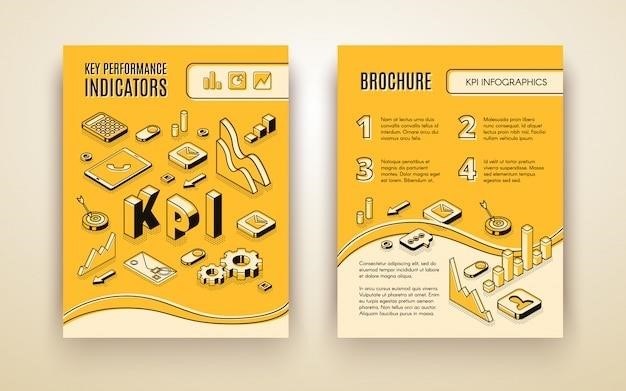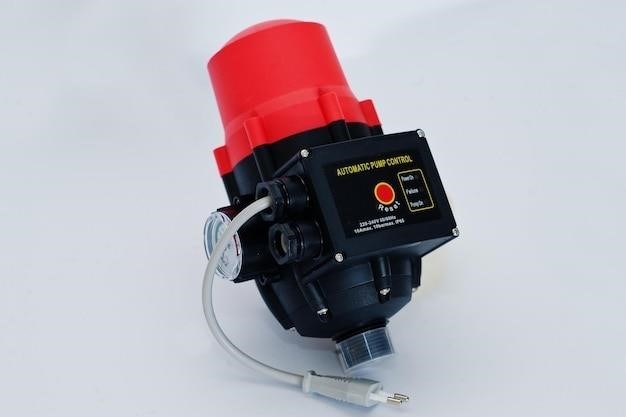
Fundamentals of Engineering Reference Manual⁚ A Comprehensive Guide
This guide explores the essential NCEES FE Reference Handbook, a crucial resource for the Fundamentals of Engineering exam. It details the handbook’s content, structure, and effective use during the exam, including navigation tips for both print and digital versions. Mastering this handbook is key to exam success.
The Fundamentals of Engineering (FE) exam is a crucial first step for aspiring licensed professional engineers. Administered by the National Council of Examiners for Engineering and Surveying (NCEES), this computer-based test assesses fundamental engineering knowledge across various disciplines. A critical component of the FE exam is the supplied-reference handbook, a comprehensive document containing formulas, tables, charts, and other essential reference information. Examinees are permitted to use only this handbook during the exam, highlighting its importance in preparation and performance. Understanding the handbook’s contents and structure is paramount to success. This handbook is not designed to answer every question but serves as a valuable resource to aid in problem-solving and recall of key engineering principles. Successful navigation of this resource is key to exam success.
The FE Reference Handbook⁚ Content and Structure
The NCEES FE Reference Handbook is a comprehensive collection of engineering formulas, tables, and charts, meticulously organized for efficient access during the exam. Its structure is designed for quick reference, not in-depth study. The handbook covers a broad range of engineering disciplines, including mathematics, chemistry, and various engineering specializations. Content is categorized into sections for easy navigation, allowing examinees to locate needed information swiftly. Each section contains relevant formulas, tables of properties, and other data frequently used in engineering calculations and problem-solving. While the handbook provides essential information, it’s crucial to understand that it’s not a substitute for thorough preparation. Effective use of the handbook requires familiarity with its organization and content prior to the exam. Knowing where to find specific information under time pressure is a skill developed through practice and review. The handbook’s digital format further enhances navigation through its searchable functionality.
Key Sections of the Handbook⁚ Mathematics, Chemistry, etc.
The FE Reference Handbook’s strength lies in its organization of critical information across diverse engineering fields. The mathematics section provides essential formulas and tables for calculus, algebra, trigonometry, and statistics—tools frequently needed for problem-solving. Similarly, the chemistry section offers fundamental concepts, periodic tables, and relevant data for chemical reactions and properties. Sections dedicated to specific engineering disciplines, such as statics, dynamics, circuits, and thermodynamics, contain pertinent equations, diagrams, and conversion factors. The inclusion of material properties, such as strengths and densities of various materials, simplifies calculations. Moreover, sections on fluid mechanics, heat transfer, and other core subjects contain the necessary data and equations for common engineering problems. The handbook’s comprehensive nature is complemented by its clear layout and indexing system, making it a valuable resource for navigating the complexities of the FE exam.
Using the Handbook Effectively During the Exam
Effective handbook use is paramount for FE exam success. Begin by familiarizing yourself with its structure before exam day; knowing where to find specific information saves precious time. During the exam, utilize the handbook’s search function efficiently—practice this beforehand. Don’t get bogged down in unnecessary details; focus on finding the relevant formulas and data needed to solve each problem. Prioritize understanding the problem statement before consulting the handbook. Skimming sections relevant to the question can be more efficient than exhaustive searches. Remember that the handbook provides formulas and data; it doesn’t explain their application. You need to already understand the underlying principles. Manage your time carefully—allocate sufficient time to find the needed information, but don’t waste time on unnecessary details. Practice using the handbook under timed conditions to refine your search strategies and improve your efficiency. Effective use of the handbook is about strategic navigation, not rote memorization.
Navigating the Digital Version of the Handbook
The digital FE Reference Handbook, provided during the exam, offers unique navigation features. Familiarize yourself with the search function before exam day. Practice using keywords and phrases to locate specific information quickly. The handbook’s searchable format allows for efficient retrieval of formulas, tables, and charts. Mastering the digital interface is crucial for time management. Understand the handbook’s organization; knowing the general location of different sections will speed up your searches. The digital version often includes hyperlinks and interactive elements; utilize these to navigate more efficiently. Remember that the digital version is only accessible during the exam. Therefore, extensive practice with the digital version is essential to optimize your performance. Efficient use of the digital features, including the search function, will contribute significantly to your success. Practice using the digital handbook under timed conditions to become proficient in its navigation.
Practice Problems and Sample Questions
Supplementing your FE exam preparation with practice problems and sample questions is crucial. Numerous resources offer practice problems aligned with the FE exam’s content and format. These problems help solidify your understanding of concepts and build confidence. Many review manuals include practice problems with detailed solutions. Working through these problems helps you become familiar with the types of questions asked and the level of detail required in your answers. Focus on problems that target your weaker areas. Sample questions allow you to assess your progress and identify areas needing further study. Use the FE Reference Handbook while solving these problems to simulate exam conditions. This reinforces your ability to locate relevant information quickly. Time yourself while solving problems to improve time management skills. Regular practice is key; consistent effort will improve your problem-solving speed and accuracy. Analyze your mistakes to identify knowledge gaps and refine your approach.
Preparing for the FE Exam Using the Handbook
Effective preparation for the FE exam hinges on thorough familiarization with the NCEES FE Reference Handbook. Begin by reviewing the table of contents to understand its structure and the topics covered. Don’t try to memorize the entire handbook; focus on understanding the organization and how to quickly locate specific information. Practice navigating the handbook efficiently. Time yourself while searching for formulas, tables, and charts. This simulates the time constraints of the actual exam. Identify your weak areas and concentrate your preparation on those topics. Use the handbook as a tool to solve practice problems. This helps you connect theory with application under timed conditions. The handbook is not a substitute for comprehensive study; use it to supplement your learning, not replace it. Create a personalized index or bookmark important sections for quick reference. Remember, efficient handbook navigation is a skill that improves with practice.
Understanding the Exam Format and Time Management
The FE exam is computer-based and time-constrained, demanding efficient use of the provided FE Reference Handbook. Familiarize yourself with the exam’s structure⁚ the number of questions, the time allotted, and the weighting of different subjects. This allows for strategic time allocation during the exam. Before the exam, practice solving problems under timed conditions to improve your speed and accuracy. Develop a strategy for tackling the questions. Some suggest starting with easier questions to build confidence and momentum. Others recommend tackling the most challenging questions first while you’re fresh. Prioritize questions based on your strengths and weaknesses. Use the time management strategies you’ve practiced during your preparation, but be flexible. If you get stuck on a problem, move on and return to it later if time permits. Remember, every question carries equal weight. Don’t spend too much time on a single question, especially if you’re unsure how to solve it. Efficient time management is crucial for success. Allocate time for each section based on its weight and your personal strengths and weaknesses. Don’t underestimate the importance of breaks; short breaks can improve focus and prevent burnout.
Strategies for Efficient Handbook Usage
Effective navigation of the FE Reference Handbook is paramount for success. Before the exam, thoroughly familiarize yourself with its organization, index, and the location of frequently used formulas, tables, and charts. Practice using the handbook’s search function if using the digital version; this will save valuable time during the exam. Develop a system for quickly locating specific information. Consider creating personal bookmarks or notes to highlight key sections you frequently refer to. Understand the handbook’s limitations; it doesn’t contain all the information you might need. Supplement it with your own study materials and focus on understanding the underlying concepts. During the exam, use the handbook strategically. Don’t waste time searching for information you already know. Prioritize using the handbook for formulas, constants, and data you may have forgotten. Remember to check units and ensure consistency throughout your calculations. Efficient handbook use is about speed and accuracy. Practice using the handbook under timed conditions to improve your search skills. The more familiar you are with its layout and content, the less time you’ll spend searching for relevant information during the exam. This will increase your available time for problem-solving.

Commonly Missed Concepts and How the Handbook Helps
Many FE exam takers struggle with specific concepts, often due to insufficient review or a lack of familiarity with relevant formulas and data. The FE Reference Handbook serves as a valuable resource to mitigate these challenges. For instance, many candidates overlook crucial details within the thermodynamics section, such as specific heat capacities or ideal gas law constants. The handbook provides these values readily, reducing the risk of errors stemming from incorrect constants. Similarly, the fluid mechanics section often presents difficulties with conversions between various units or applying Bernoulli’s equation correctly. The handbook’s comprehensive tables and conversion factors are invaluable in preventing simple yet costly mistakes. In the materials science section, understanding stress-strain relationships, material properties, and failure criteria are critical. The handbook offers helpful diagrams and equations that can clarify these complex topics and prevent misinterpretations. Remember, the handbook is not a substitute for thorough understanding; it’s a tool to enhance your performance by providing quick access to essential data and formulas, thus minimizing calculation errors and boosting confidence during the exam.
Beyond the Handbook⁚ Additional Study Resources
While the NCEES FE Reference Handbook is indispensable, relying solely on it for FE exam preparation is insufficient. Supplementing your studies with additional resources significantly enhances your chances of success. Consider reputable FE exam review manuals; these offer comprehensive explanations of concepts, practice problems mirroring the exam’s difficulty, and targeted strategies for efficient time management. Online resources, such as practice question banks and interactive learning platforms, provide valuable opportunities for self-assessment and targeted review of weak areas. Furthermore, joining online study groups or attending in-person review courses fosters collaborative learning, allowing you to learn from peers and gain diverse perspectives on challenging topics. Remember, consistent practice is key. Regularly solving practice problems, utilizing various study materials, and simulating exam conditions are essential for building confidence and identifying areas needing further attention. A multifaceted approach, combining the handbook with diverse supplemental resources, maximizes your preparation and improves your chances of passing the FE exam.
The Importance of Familiarization Before Exam Day
Thorough familiarization with the NCEES FE Reference Handbook before exam day is paramount for success. The exam’s time constraints necessitate quick and efficient navigation of the handbook’s extensive content. Prior familiarity minimizes time spent searching for formulas, charts, or tables during the test, allowing for more focus on problem-solving. Pre-exam review allows you to identify the handbook’s organization and locate key information rapidly. This reduces anxiety and improves your ability to manage time effectively under pressure. Understanding the layout, indexing, and search functionality (if using the digital version) significantly boosts your efficiency. Knowing where to find specific equations, constants, or data saves precious minutes, ultimately increasing your score. Practicing with the handbook beforehand allows you to become comfortable with its format and content. This familiarization reduces cognitive load during the exam, improving focus and performance. By becoming proficient in navigating the handbook prior to test day, you transform it from a potential obstacle into a valuable tool for success.
Passing the FE Exam⁚ Tips and Success Strategies
Success on the FE exam hinges on a multifaceted approach that extends beyond mere content knowledge. Effective time management is crucial; allocate time per question strategically, skipping challenging ones initially and returning later. Prioritize accuracy over speed; rushing leads to careless errors. Practice extensively with past exams and sample questions to simulate exam conditions and identify weak areas. Understanding the exam format is essential; familiarize yourself with question types and scoring mechanisms. Develop a robust study plan encompassing all topics, focusing on areas where you feel less confident. Consistent review and practice are key; regular study sessions strengthen retention and build familiarity with concepts and problem-solving techniques. Seek feedback on practice exams to identify areas needing further attention. Consider joining study groups for peer support, discussion, and diverse perspectives. Remember, the FE Reference Handbook is your ally; master its navigation and content to utilize it effectively during the exam. A calm and focused approach, combined with thorough preparation, significantly enhances your chances of success.







